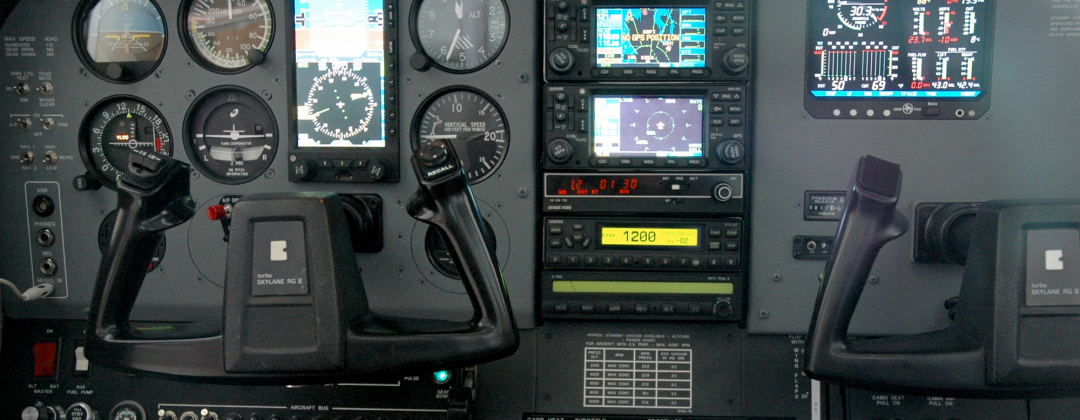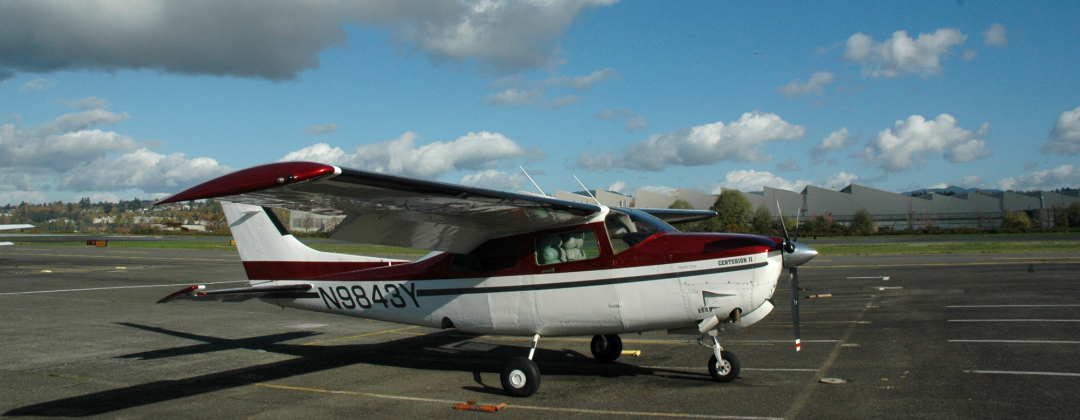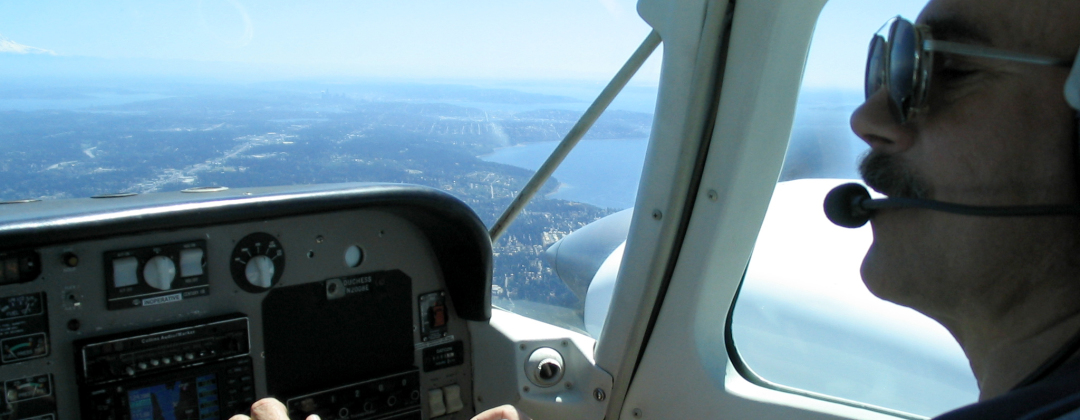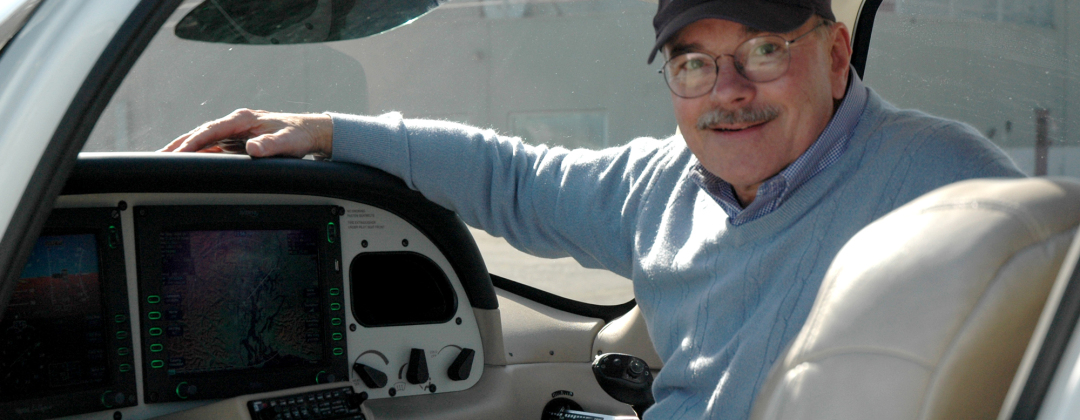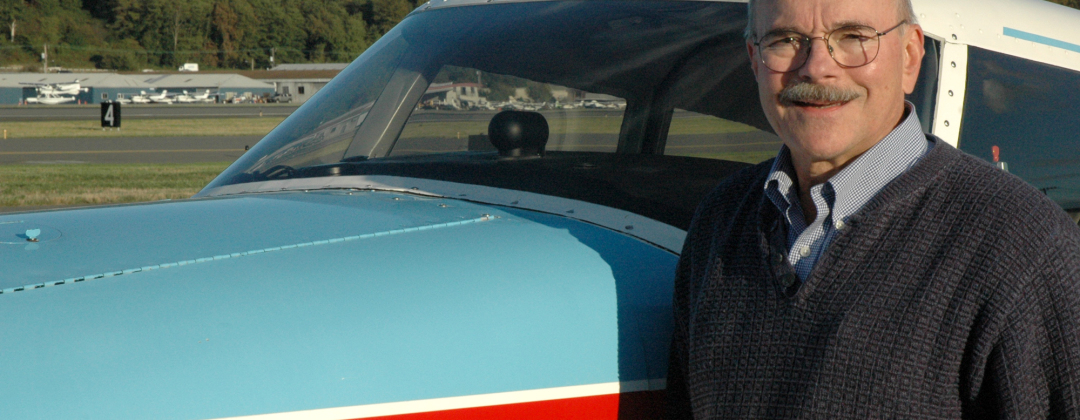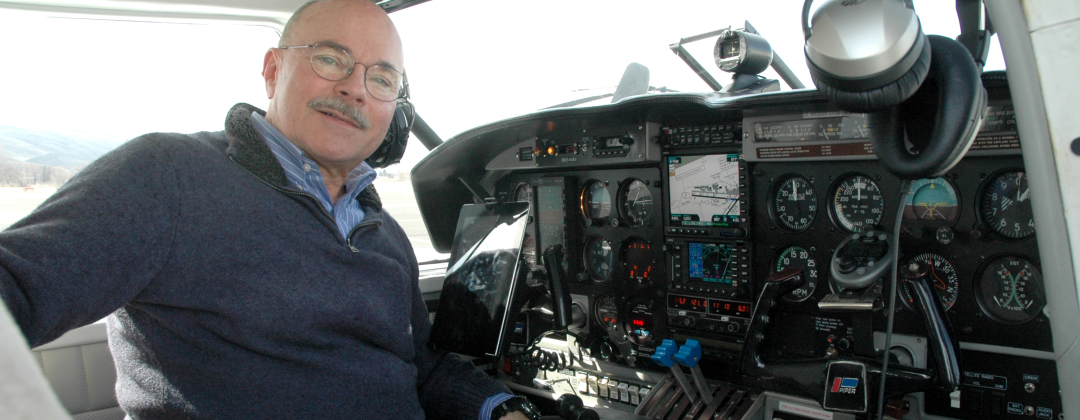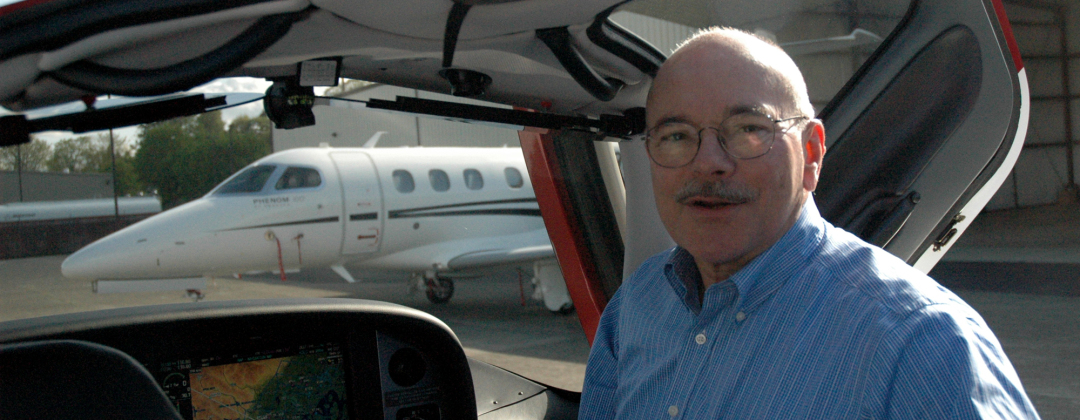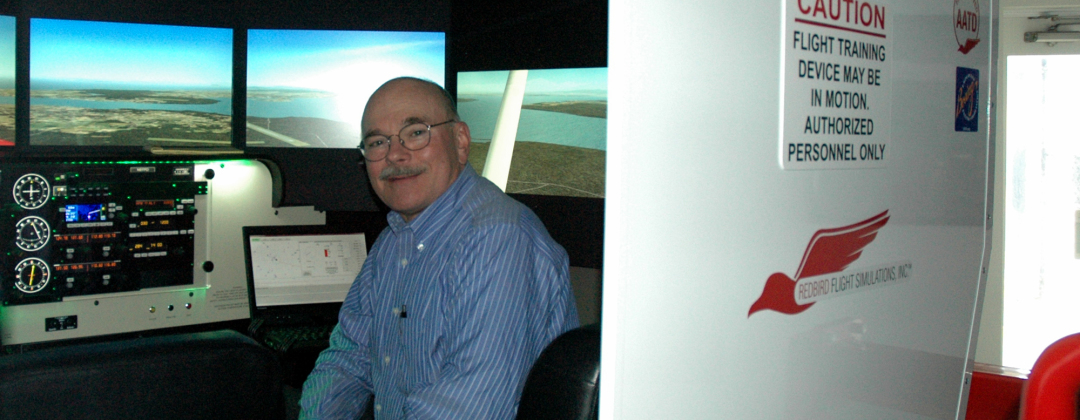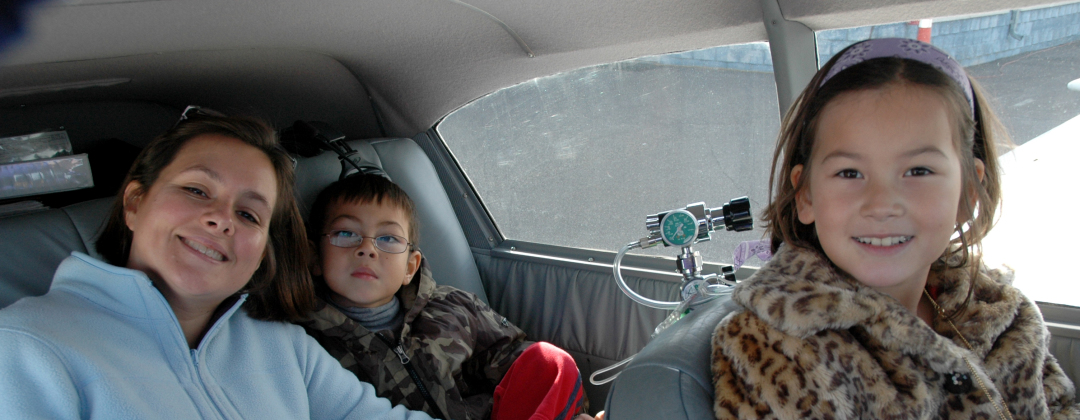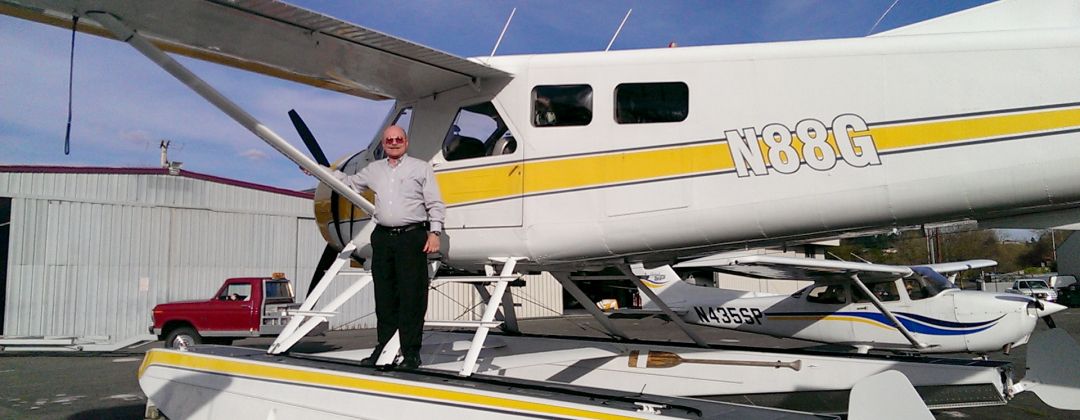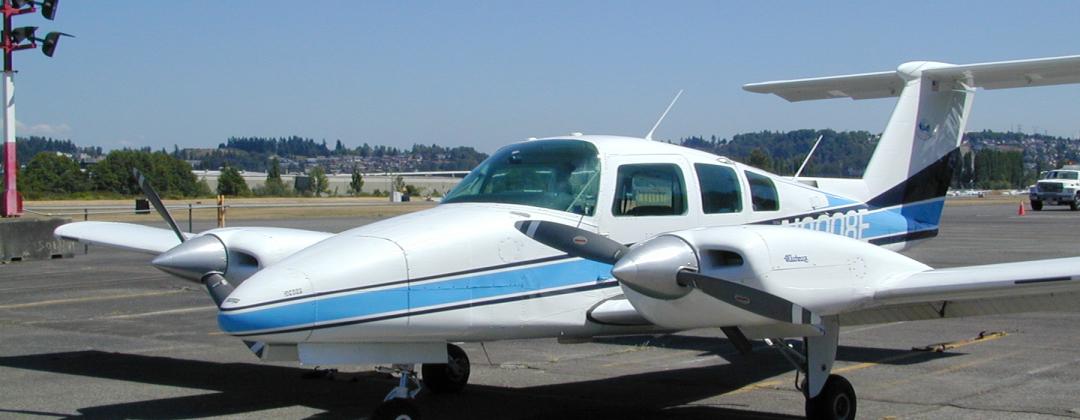ATP, Gold Seal CFI-CFII-MEI
Howard completed his undergraduate education at Coe College in 1967 with degrees in Mathematics and Physics and graduated Magna Cum Laude. He was elected to Phi Beta Kappa and awarded a National Education Act fellowship for a PhD degree in Computer Science at the University of Iowa. However, the needs of the Vietnam War caused the government to change the criteria for student deferments, and after completion of the Master of Science degree at Iowa in 1969 he accepted a direct commission as a U.S. Army officer. He was assigned to the Department of Defense Computer Institute (DODCI) in Washington, D.C. where his teaching passion was put to use instructing General Officers and civilian executives.
Upon completing active duty, he joined Potomac Electric Power Company in 1971 and managed the PEPCO mainframe data center. In 1980 he accepted a position with The Boeing Company in the Vienna Virginia office where he initially managed a commercial data center and then held several program management positions supporting NASA and other government agencies.
His interest in aviation began in 1983 when he began to build and fly radio controlled model aircraft, primarily as an activity with his son, 9 years old at the time. He joined the Academy of Model Aeronautics and became a leader-contest director and has maintained membership for more than 30 years. His son began flying gliders in high school, and then attended Middle Tennessee State University where he graduated with an aviation degree and his own CFI certificate.
After Howard’s two children completed college, and funds and time were available, Howard began flying full scale aircraft and passed his Private Pilot check ride in December, 1996. The next year he accepted a corporate move to the Seattle area and immediately joined the Boeing Employees Flying Association (BEFA). He added a seaplane class in 1997, his Instrument rating and Commercial Pilot certificate in 1998, and then became a CFI in 1999. Also in 1999 he purchased a Comanche 250 which he has owned and refurbished since that time. His aviation training continued, and he added Instrument Instructor in 2000, and in 2003 added a multiengine class, CFI-MEI, and the ATP. He became a Gold Seal CFI in 2007 having endorsed twice the required number of candidates in the previous 2 years.
Howard was elected to the position of Operations Officer at BEFA for a term that began in 2000, and became President in 2004 and served in that role through 2005. In these positions, he implemented customized checklists for BEFA aircraft and made available pilot friendly weight and balance spreadsheets, and GPS navigation was introduced to the BEFA fleet. After leaving the board, Howard continued volunteer support, creating aircraft performance models for flight planning software from published performance data, updating Jeppesen chart binders and flight planning software, and updating GPS databases supported by Jeppesen subscriptions.
In October 2000, Howard accepted an early retirement option at Boeing and became devoted to the work of a full time professional flight instructor, with most of the instruction being done at BEFA. He has accumulated 14,000 hours of flight time which includes 11,000 hours of flight instruction. Since becoming a CFI he has trained and endorsed more than 100 candidates for certificates and ratings, including 17 CFI/CFII candidates. On a yearly basis he conducted ground and flight training for BEFA members for initial or new aircraft models and conducted recurring check rides, and there were 63 such check rides in 2012, a representative year. Approximately 25% of the current instructors at BEFA were trained by Howard.
Aircraft noise and its impact on residents of Renton living close to the airport became an issue with the City of Renton during 2001. The Renton Airport Advisory Committee (RAAC) was formed to initially deal with this and other airport issues, and Howard became a charter member. Using his background in physics and “fly friendly” information from AOPA, Howard developed and implemented noise abatement procedures for BEFA. These procedures were demonstrated on flights to City Council, airport management, and RAAC members, and were later adopted by the airport as general procedures for the airport itself.
The FAA issued the first WAAS LPV approach in 2006, and Howard was an early adopter of the technology for his Comanche. As noise on the NDB and LNAV approach paths continued to be an issue for residents of Mercer Island living under the approach path to Renton, Howard worked with the FAA to implement a 4.2 degree LPV approach which both improved approach minimums for pilots and reduced the noise impact for residents. He developed a presentation for the RAAC on this plan in 2007. At the same time, Howard requested from the FAA Standard Instrument Departures for the Renton airport and these were developed and published with the RNAV LPV GPS approach.
Howard became a Seattle FSDO Safety Counselor shortly after becoming a CFI, and then transitioned to a FAASTeam Representative in 2005. He has been active in the FAA Safety program both as a pilot and as a representative. Howard completed 46 accredited Wings activities since 2007, initially achieved the Master level of Wings in 2009 and renewed this status in 2012. He had given FAASTeam presentations on topics such as Flying to Canada and iPad for the Pilot.
In part because of his background in Information Technology, Howard has been a leader in incorporating advanced technology for BEFA. In 2005, BEFA acquired a Cirrus aircraft and Howard completed the Cirrus Standardized Instructor Program (CSIP), a formal multiple day flight and ground training program conducted by a factory instructor. Howard then trained other BEFA CFIs to give Cirrus aircraft training to members. He has renewed his CSIP status yearly, adding Garmin Perspective certification. In 2008, two Technically Advanced Aircraft, a C182RG and a T210N, were added to the BEFA fleet with advanced avionics including WAAS GPS, MFD, engine monitors, and autopilots. Howard developed and presented to BEFA members the initial ground training on the common avionics in the aircraft, and on the turbocharger and Flight into Known Icing system on the T210N and is the BEFA check pilot for the T210N. In 2013, BEFA installed the first touch screen GPS in a BEFA aircraft and Howard developed and gave transition training for the unit to members.
In 2010 a BEFA member acquired a pressurized PA46 Piper Mirage for his business requirements, and Howard became the Chief Pilot for the member’s company. Howard finished initial insurance approved flight and ground training for the PA46, completed recurrent training annually, and then was approved himself to provide the insurance required training. He then provided this initial insurance approved training for a new part owner of the airplane.
Howard has used his Comanche extensively for personal and business travel. Some of the business travel trips have included multiple cross country trips to the AOPA Expo/Summit, held in locations on both east coast and west coast locations. In 2005, Howard won the AOPA “Longest Cross Country” award for his travel in a General Aviation airplane to the Expo, held that year in Tampa, Florida, a great circle one way distance of 2,193 nm. Reports of many of these trips, demonstrating the value of General Aviation, and serving as teaching points for his instruction with clients, are included under the Resources tab of this web site. In 2015 Howard sold the Comanche to a client and purchased a Cessna P210 for Pressurized Flight Into Known Icing missions. The P210 is currently being upgraded with state-of-the-art avionics, including an Active Traffic system and ADS-B In and Out, and will be described in future updates to this web site.
In 2014, Howard was selected by the Seattle FSDO as a Designated Pilot Examiner.
Howard has been an active member of Angel Flight West (AFW) since 2001 and has completed 25 missions as a Command Pilot. In addition he has served as a Mission Orientation Pilot for AFW, and has provided the initial Mission Orientation to numerous new Angel Flight members so that they could serve as Command Pilots. Howard has also been a member of AOPA and EAA since 1996, a member of the NAFI since 1999, and a member of SAFE since 2014.

